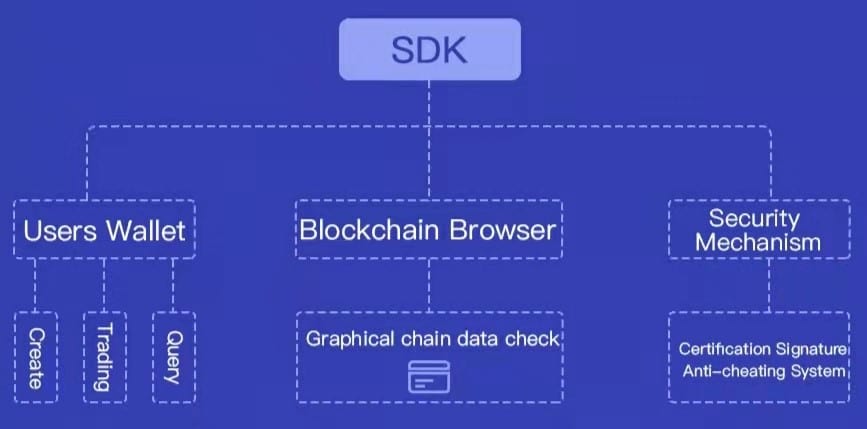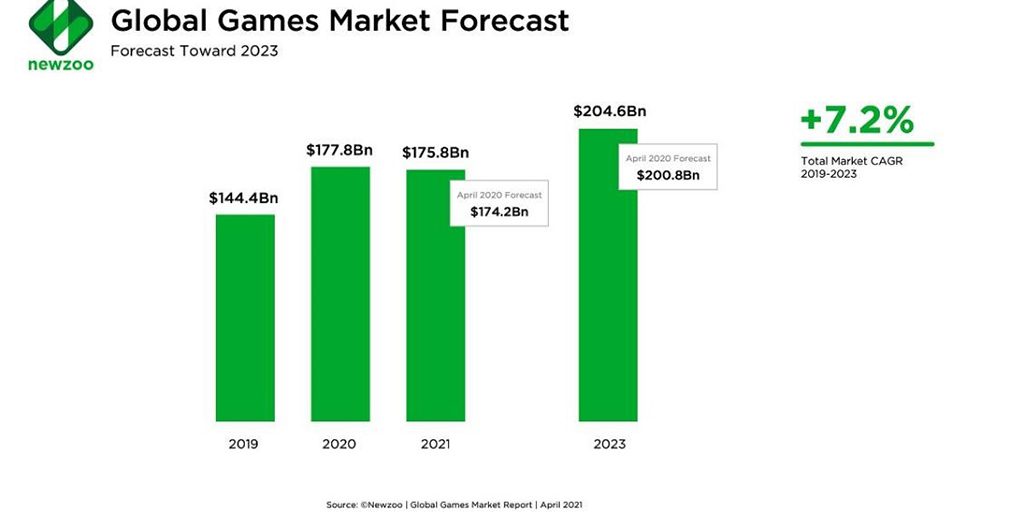The SDK interface provided by Gmatrixs allows developers to quickly develop Blockchain Games, to record assets and important mechanisms of the game on the chain.
If 2020 was the breakout year for DeFi, there is no doubt that 2021 is the breakout year for GameFi (a new model for Blockchain Game).
In the past six months, Axie Infinity, a Blockchain Game , as a typical example of a new game economy model, has not only introduced the P2E (Play-to-earn) model to the world but also gradually established the “Blockchain Game ” Development foundation.
In the future, how to introduce a wider range of gameplay into Blockchain Games, especially how to combine Defi, NFT, metaverse and other emerging fields to bring more diversified “Play+Earn” mechanism to players, and how to let more game manufacturers release Blockchain Games at low cost to bring the prosperity of the whole market have undoubtedly become the key issue for the industry to achieve further growth.
Among them, Gmatrixs aims to become a Omni-Blockchain Game publishing platform, and helps games carry out blockchain reform through the low cost of SDK. This new innovation model has attracted a lot of attention.
Blockchain Games: “Second Half” Development Period
In 2020, the global total value of games reached $159 billion and generated $177.8 billion in revenue, up 23.1% from 2019. According to Newzoo, there will be 2.9 billion gamers globally by the end of this year. The games industry is expected to exceed $200 billion by 2023.
By contrast, the blockchain gaming market has attracted more than $1 billion in investment as of the third quarter of this year, even though it has seen rapid growth this year. However, from the number of projects, users, activity, total market value, project development, market share and other dimensions, the industry is still in the early stage of development.
The reason for the relatively simple mainstream gameplay of blockchain is that a good user experience requires quick feedback, while blockchain technology requires performance compromises in order to maintain decentralization and credibility, and lacks an architecture to handle large amounts of concurrency.
In addition, the existing blockchain infrastructure lacks functions and services suitable for the game industry. Almost all system components, collaborative processing module customization functions and system interfaces required by game developers need to be built by themselves, which not only takes time and effort but also lacks unified standards.
Therefore, if the resources can be integrated under the unified infrastructure and standards, and get through the assets between each other, to achieve the interconnection of gameplay, which is the key to achieve greater imagination of Blockchain Games.
Gmatrixs: Omni-Blockchain Game Publishing Platform
These are exactly what Gmatrixs vision and is currently doing – creating an Omni-Blockchain Game Publishing platform, accelerating the game ecosystem through stand-alone chain technology, and providing middleware to help the reform of Blockchain Games. Gmatrixs will provide the traditional game party with middleware technology, game asset release, game prop trading, flow ecological sharing, asset chain trading, platform arena and other one-stop Omni set of functional component services to help game projects to simplify the reform of Blockchain Games.
The most critical one is that Gmatrixs is committed to providing the related core components required for Blockchain Game development, building the infrastructure required for Blockchain Game iterative development to provide new game chain change solutions for game developers, so that the Blockchain Game project can be used efficiently, freely and with a low threshold. In this way, it is expected to completely reform the innovation constraints of the existing Game system, and create a free interconnection and highly interconnected metaverse ecology.
Gmatrixs: Seize the New Decentralized Publishing Trend of Blockchain Game Track
At present, the traditional game industry is a highly monopolized industry, and the problem for small and medium-sized manufacturers is that the channel and customer acquisition are blocked by large manufacturers. Because of the talent and capital advantages, giant game manufacturers can invest high costs in-game research and development and more users.
At the same time, the traditional centralized Game service providers, due to their own interests or the natural design defects of the centralized server, can hardly avoid things that erode the interests of ordinary game players, such as data leakage, changing rules, closing accounts, freezing props and equipment, etc.
Players invest money and time, but have access to accounts and game assets, not ownership. Compared with traditional Internet games, cross-game asset circulation and transaction interaction are more insurmountable obstacles, which can not smoothly realize value circulation, and the sunk cost of game players is very high.
The model of Play to Earn undoubtedly gives small and medium-sized game manufacturers an opportunity to develop. However, for small and medium-sized game developers and individual game developers, due to their little understanding of blockchain technology, the transformation of economic model and operation of the crypto community, the transformation is also extremely difficult.
What Gmatrixs does is to provide integrated SDK middleware to help manufacturers complete the transformation of Blockchain Games. In order to reduce the cost of developers, improve the efficiency and reduce the cost of game production, integrate the Blockchain Game industry accumulation, with high-quality industry resources.
Gmatrixs Technology: Energizes the Reform of Chain Game
The SDK interface provided by Gmatrixs allows developers to quickly develop Blockchain Games, to record assets and important mechanisms of the game on the chain.
The SDK includes important functions such as user system, transaction system and distribution system. The SDK comes with a wallet and integrates multiple chains to lower the user entry threshold. When transferring assets, users need to recharge the gas fee. According to local laws and regulations, they can recharge the legal currency or cryptocurrency.
The SDK can also help the Game set up an internal trading platform, helping the Game project to complete the key assets to be recorded on the chain and subsequent asset transactions. Our own trading platform also provides a channel SDK reward and subcontracting system for tracking the distribution of game channels.
The SDK includes user wallets, blockchain browser interfaces, authentication signatures, anti-cheat modules, Websockets and events, Solidity +ETH virtual machines, the transformation of gateway integration and other functions.
User wallet mainly provides users with account creation, transfer, query and other functions, while blockchain browser connects Ethereum, authentication signature and anti-cheating system to provide perfect protection for user asset security.

In short, Gmatrixs through the provision of modular, standardized development components, creates a rich and convenient SDK and high-performance scalable game development protocols, so as to form a sound Blockchain Game infrastructure and integrated solutions.
Stand-alone Chain speeds up the game ecology while ensuring security and improving network performance.
Gmatrixs integrates ETH/BSC and other multi-chain architecture, so game developers only need to integrate once. They can get users in different public chain environments, to ensure the application of their games in different ecology.
Gmatrixs also uses Stand-alone Chain technology and lightning networks to improve the performance of blockchain network computing while ensuring data authenticity. Stand-alone Chains will be primarily used for storage, which is similar to chain structured databases. Lightning networks are similar to centralized databases in that they can asynchronously chain results.
The Stand-alone Chain is used to confirm the data of the independent chain, and the two-way/joint protocol is used to make the assets in the equivalent two-way flow between the main chain and the Stand-alone Chain. The use of the Stand-alone Chain can improve the transfer speed and reduce the GAS cost. At the same time, the high concurrency decentralized applications supported by Ethereum are implemented.
Stand-alone chains are chains independent of Ethereum with their own pool of validators, which are responsible for their own security and provide better independence and flexibility. The solution is usually suitable to be able to run a sufficiently decentralized and secure pool of validators. On the basis of not affecting the work of the original main chain, the original blockchain can be upgraded to provide better independence and flexibility. In the future, parts of the game that need to be connected will be standardized and made into templates to further reduce the access threshold of the game.
Traditional game developers are already very familiar with the SDK access and adaptation, and the corresponding function on the chain of Gmatrixs will be encapsulated into the complete SDK. It is convenient for developers and manufacturers in traditional industries to easily use and apply. Without learning any blockchain-related professional development knowledge or making significant technical modifications, it can be seamlessly connected and easily realize “Blockchain Reform” for traditional games.
Conclusion
In general, Gmatrixs helps traditional game manufacturers easily integrate the required functions on the chain, and helps mature game developers quickly transition. Game developers only need to determine the assets, values and game rules to be recorded on the chain, which can easily access the SDK to achieve the corresponding functions. There is no doubt that these features provide an opportunity for small and medium-sized game manufacturers to make the transition at the new track.
From this point of view, the positioning of “Omni Blockchain Game Publishing Platform” is Omni of challenges and imagination space. In the future, what achievements will Gmatrixs make in this direction? Please stay tuned!
Please check out latest news, expert comments and industry insights from Coinspeaker’s contributors.


